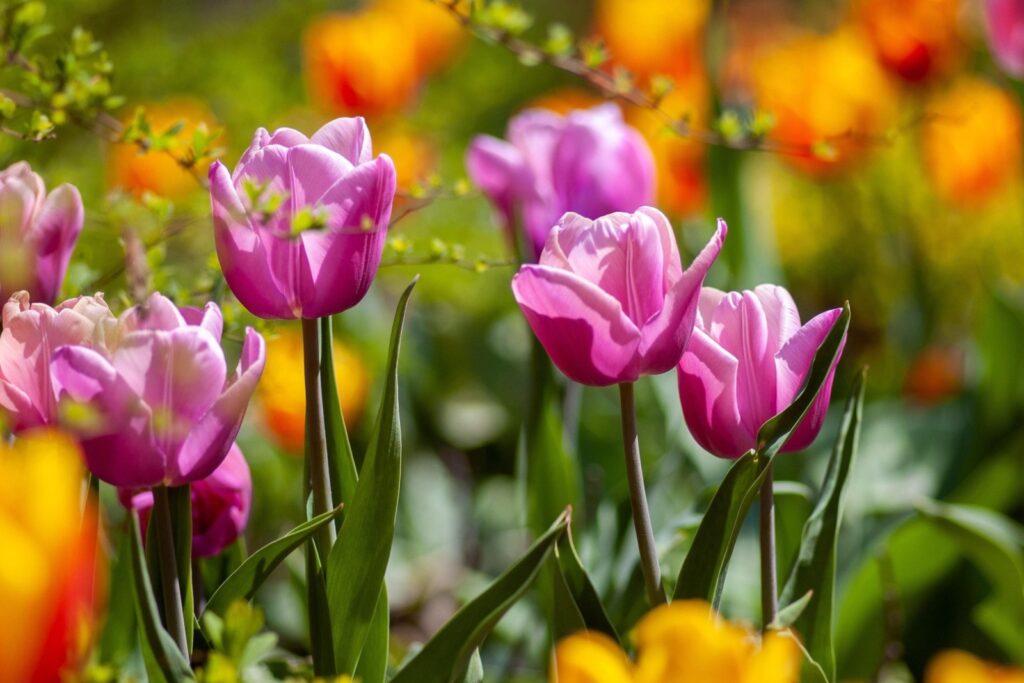Creating a Year-Round Flower Garden: A Month-by-Month Planting Guide
A flower garden that blooms year-round can transform your outdoor space into a vibrant, colorful sanctuary. With careful planning and the right plant choices, you can enjoy a continuous display of flowers throughout the seasons. Here’s a comprehensive month-by-month planting guide, along with tips on companion planting and maintenance to help you create your dream garden!
January – Planning Your Garden
- Assess Your Space: Take note of sunlight, soil type, and existing plants.
- Choose Your Flowers: Research flowers that bloom in each season. Consider perennials for long-lasting blooms and annuals for seasonal color.
- Companion Planting: Plan combinations that support each other. For example, marigolds can deter pests, while sunflowers provide support for climbing plants.
February – Early Planting
- Start Seeds Indoors: Begin sowing seeds for early bloomers like pansies and snapdragons indoors.
- Prepare Garden Beds: Clear any debris and enrich your soil with compost or well-rotted manure.
March – Spring Awakening
- Transplant Seedlings: As the last frost approaches, transplant your seedlings outdoors.
- Plant Spring Bulbs: If you didn’t plant bulbs in the fall, you can still plant them now. Tulips and daffodils will bring early spring color.
- Maintenance: Mulch around new plants to retain moisture and suppress weeds.
April – Flourishing Foliage
- Add Annuals: Plant hardy annuals like petunias and geraniums to fill in your garden.
- Companion Planting: Pair flowers with vegetables to maximize space and deter pests. For instance, plant nasturtiums near tomatoes.
- Fertilize: Use a balanced fertilizer to promote growth.
May – Full Bloom
- Summer Annuals: This is the perfect time to plant summer annuals like zinnias and cosmos.
- Perennial Care: Divide and transplant perennials that have become overcrowded.
- Watering: Ensure consistent watering, especially for newly planted flowers.
June – Mid-Year Maintenance
- Deadheading: Remove spent blooms to encourage new growth and prolong flowering.
- Weeding: Regularly check for weeds and remove them to reduce competition for nutrients.
- Mulching: Add more mulch as needed to keep the soil cool and moist.

July – Summer Splendor
- Plant Heat-Loving Flowers: Consider planting sunflowers, marigolds, and dahlias for vibrant summer color.
- Pest Control: Keep an eye out for pests and use natural remedies like neem oil or insecticidal soap if necessary.
August – End of Summer Blooms
- Fall Planting: Start planting fall-blooming flowers like asters and chrysanthemums.
- Companion Planting: Consider planting cover crops like clover in empty spaces to improve soil health for the next season.
September – Autumn Arrivals
- Fall Bulbs: It’s time to plant spring-flowering bulbs like hyacinths and crocuses.
- Maintenance: Continue deadheading and watering as needed. Prepare your garden for cooler temperatures.
October – Preparing for Winter
- Cut Back Perennials: Trim back spent perennial foliage to tidy up your garden.
- Mulch: Apply a thick layer of mulch to protect roots from frost.
- Planning for Next Year: Start thinking about what worked well and what you want to change for next year.
November – Winter Preparation
- Final Cleanup: Remove any dead plants and debris to prevent pests and diseases.
- Plant Winter Flowers: Consider planting winter-blooming flowers like hellebores for early color.
December – Reflect and Plan
- Reflect on Your Garden: Take notes on what worked and what didn’t.
- Plan for Next Year: Research and order seeds for the upcoming planting season.
Tips for a Thriving Year-Round Garden
- Companion Planting: Pair plants with complementary needs and benefits. For example, planting garlic near roses can help repel pests.
- Diversity: Include a mix of annuals, perennials, and bulbs to ensure blooms throughout the year.
- Maintenance: Regularly deadhead, water, and fertilize to keep your flowers healthy and blooming.
Conclusion
Creating a year-round flower garden requires thoughtful planning and care, but the reward of continuous blooms is well worth the effort. By following this month-by-month guide and incorporating companion planting, you can cultivate a vibrant garden that brings joy in every season. Happy gardening!
Tags






